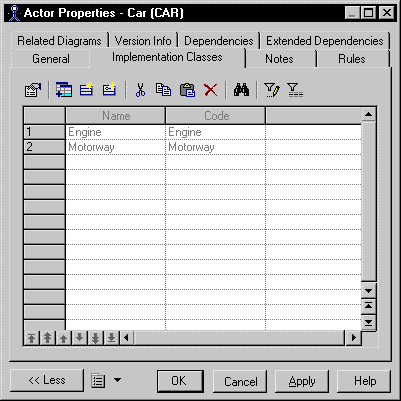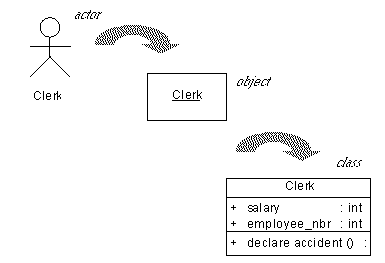The Implementation Classes tab shows the list of classes and interfaces used to implement an actor. An actor can be a human being (person, partner) or a machine, or process (automated system). When analyzing what an actor must do, you can identify the classes and interfaces that need to be created for the actor to perform his task, and attach them to the actor.
Creating a Class or an Interface
To add a class or interface to the list, use one of the following tools:
For example, an actor Car needs the classes Engine and Motorway to perform its task. They are shown as related to the actor in the following figure:

You can display the names of the actors associated with a class on the Dependencies tab of its property sheet.
Example
Conceptually, you may link elements even deeper.
For example, a clerk working in an insurance company is represented as an actor in a use case diagram, dealing with customers who declare a car accident.
The clerk actor becomes an object in a communication or sequence diagram; those diagrams representing the actions between the objects, the clerk as an object receives messages from customers and sends messages to his manager.
The clerk as an object is also an instance of a class Clerk that can be found in a class diagram with its attributes and operations.



